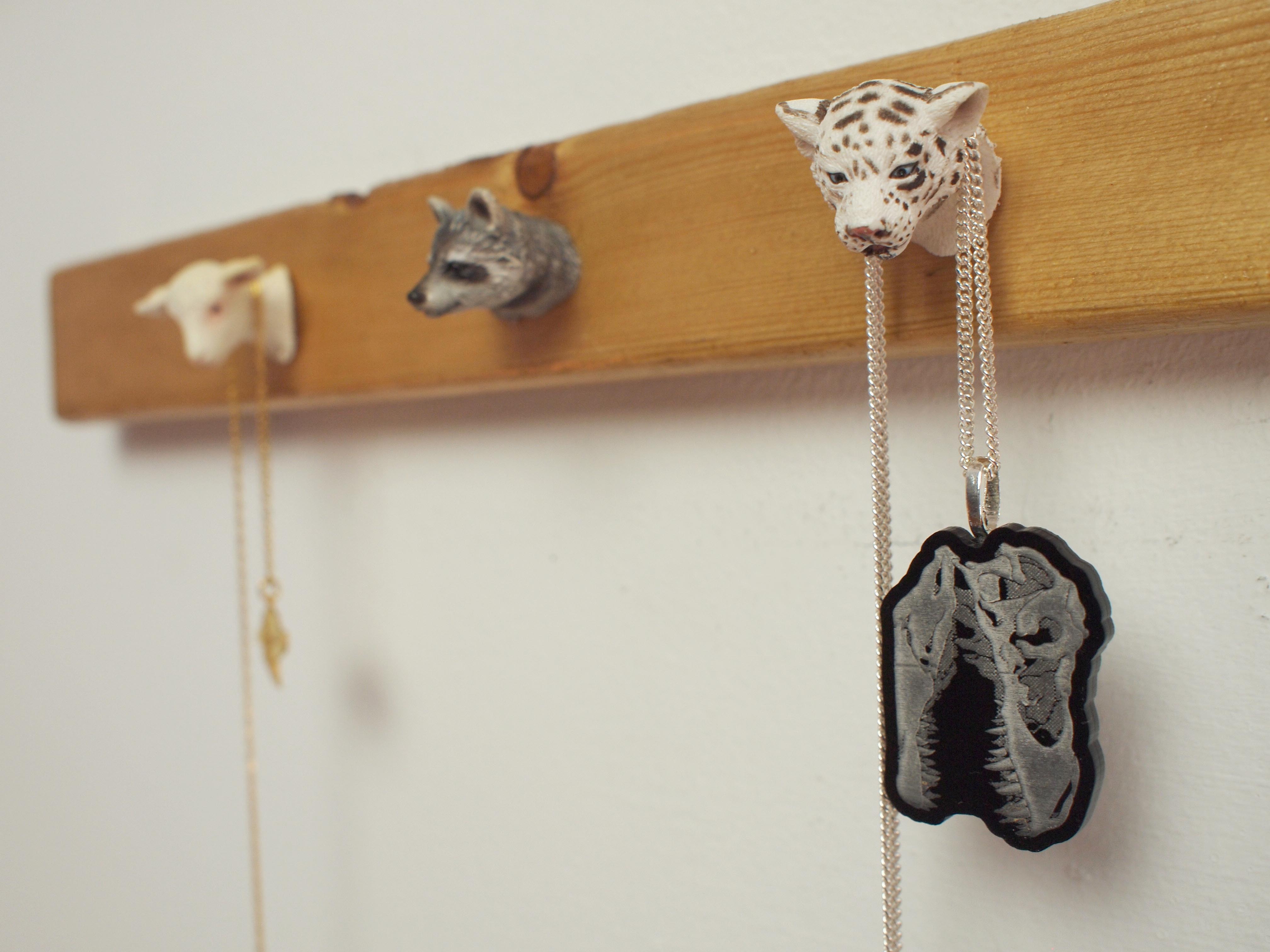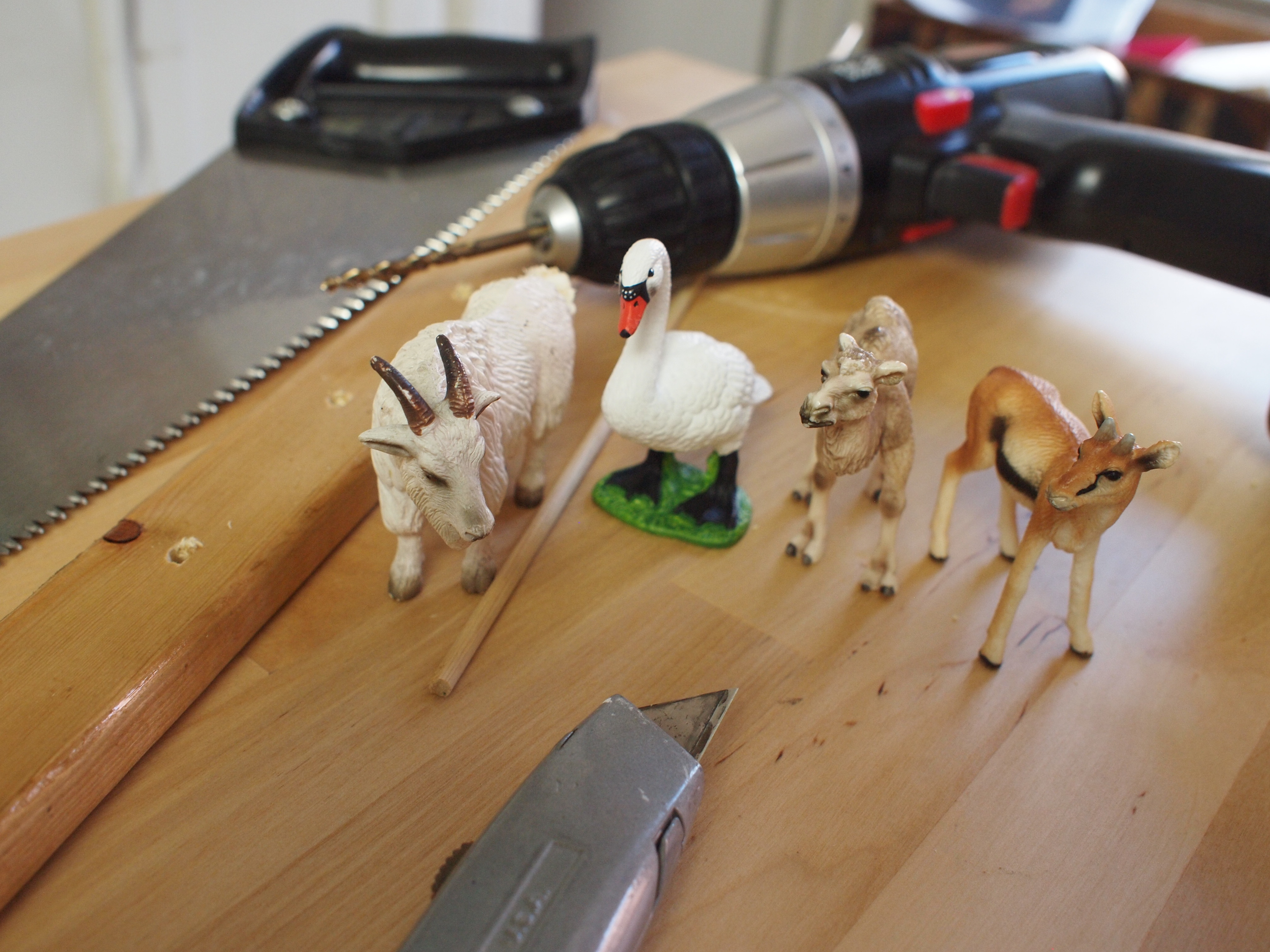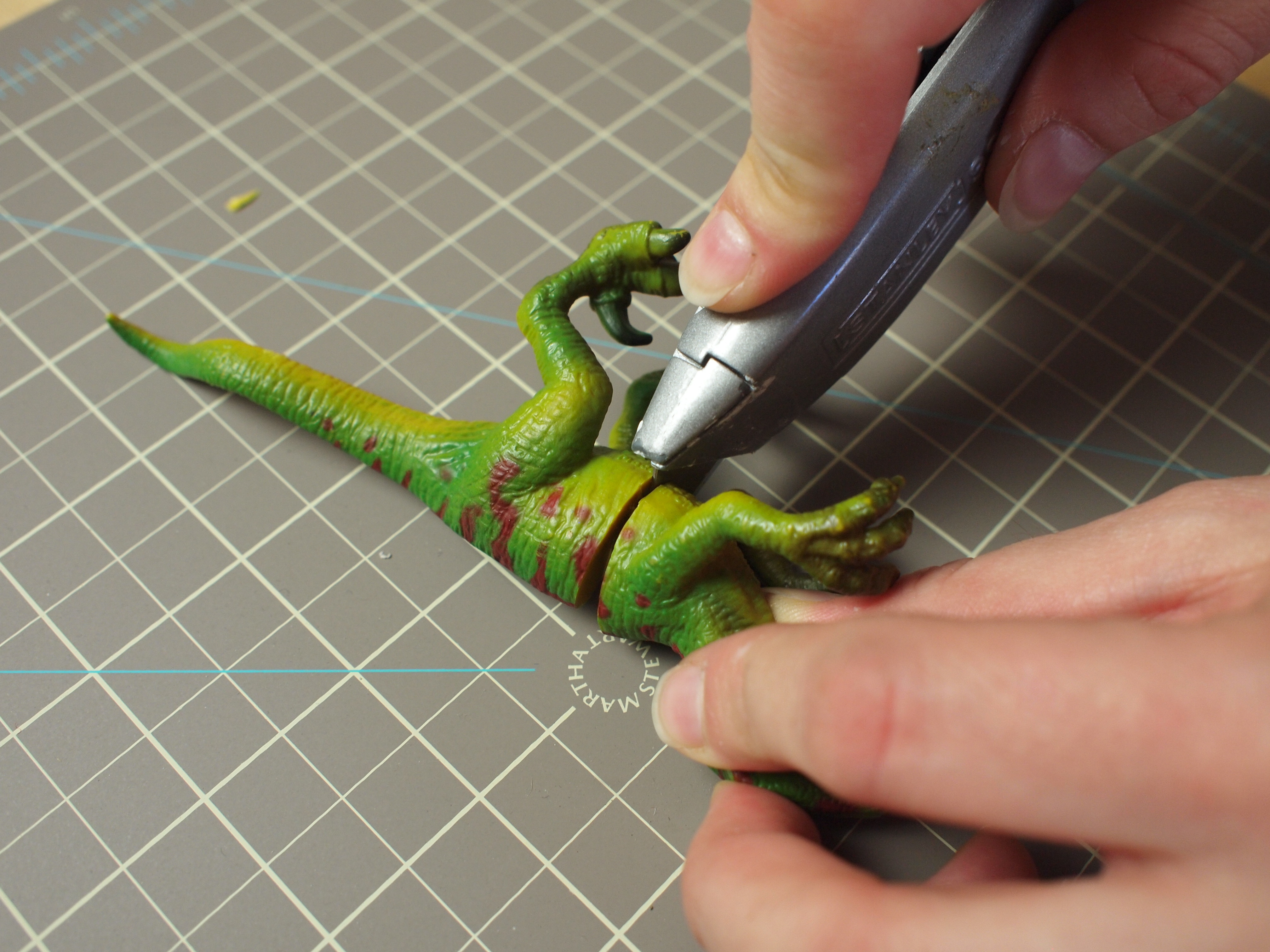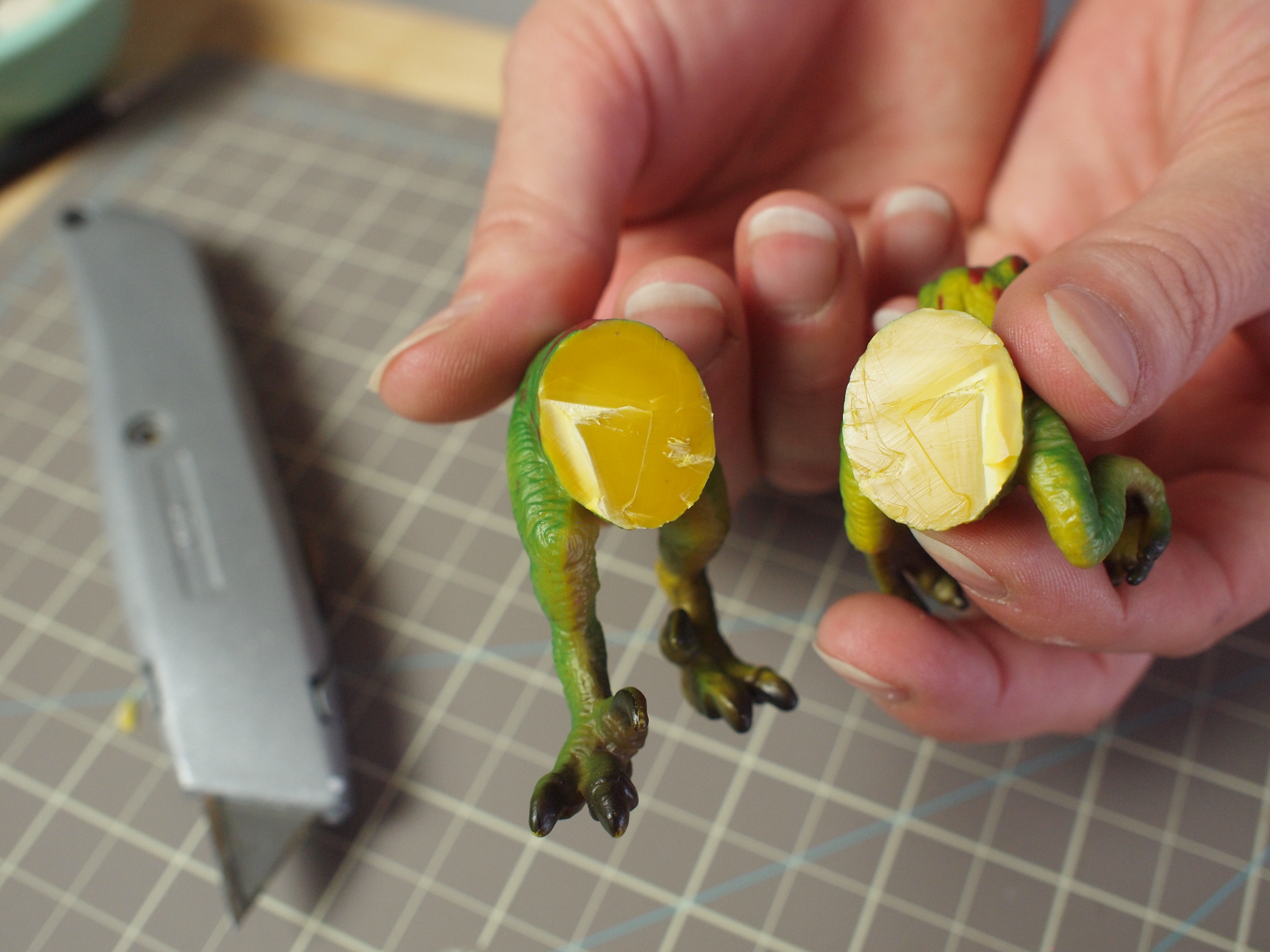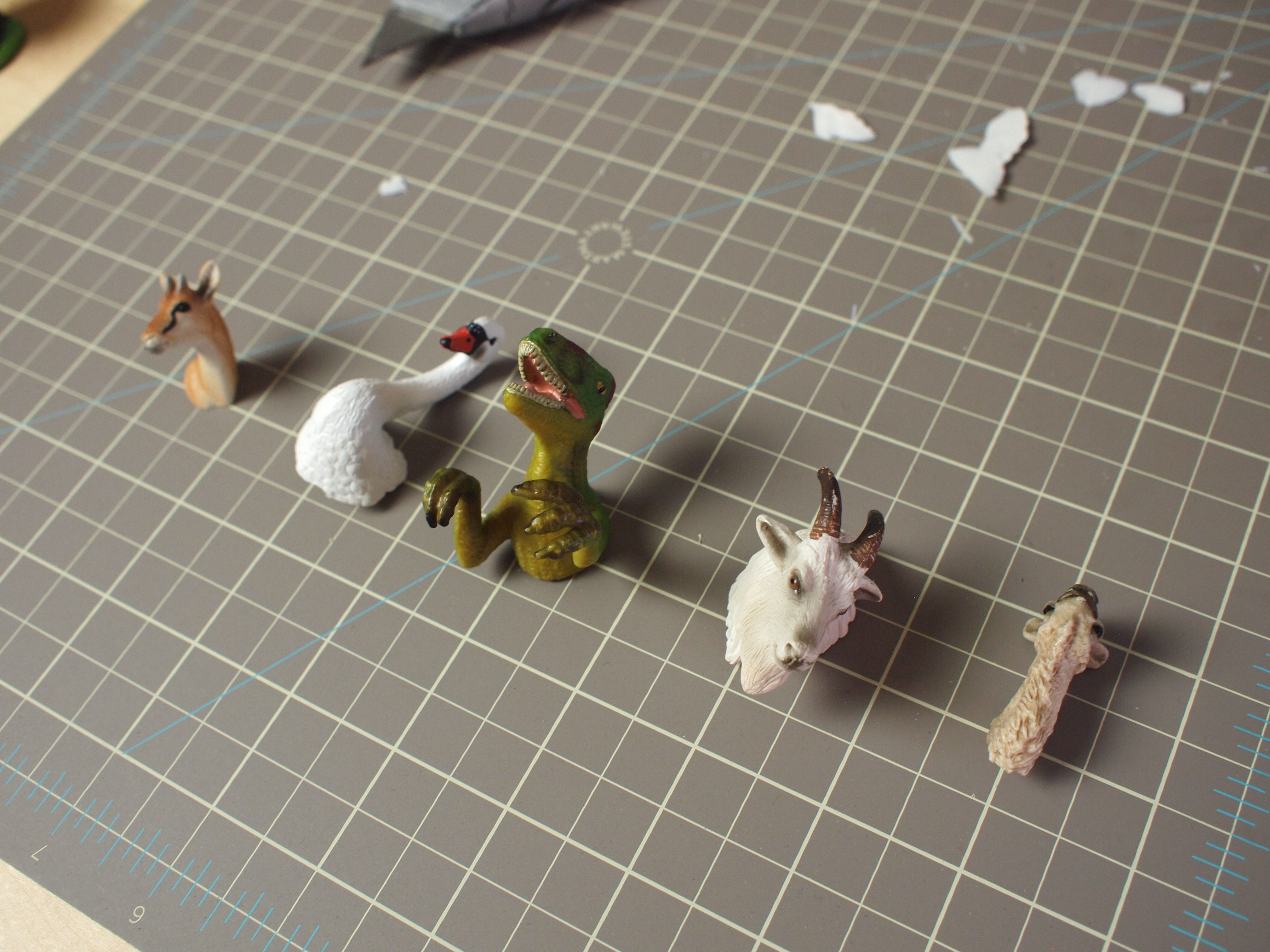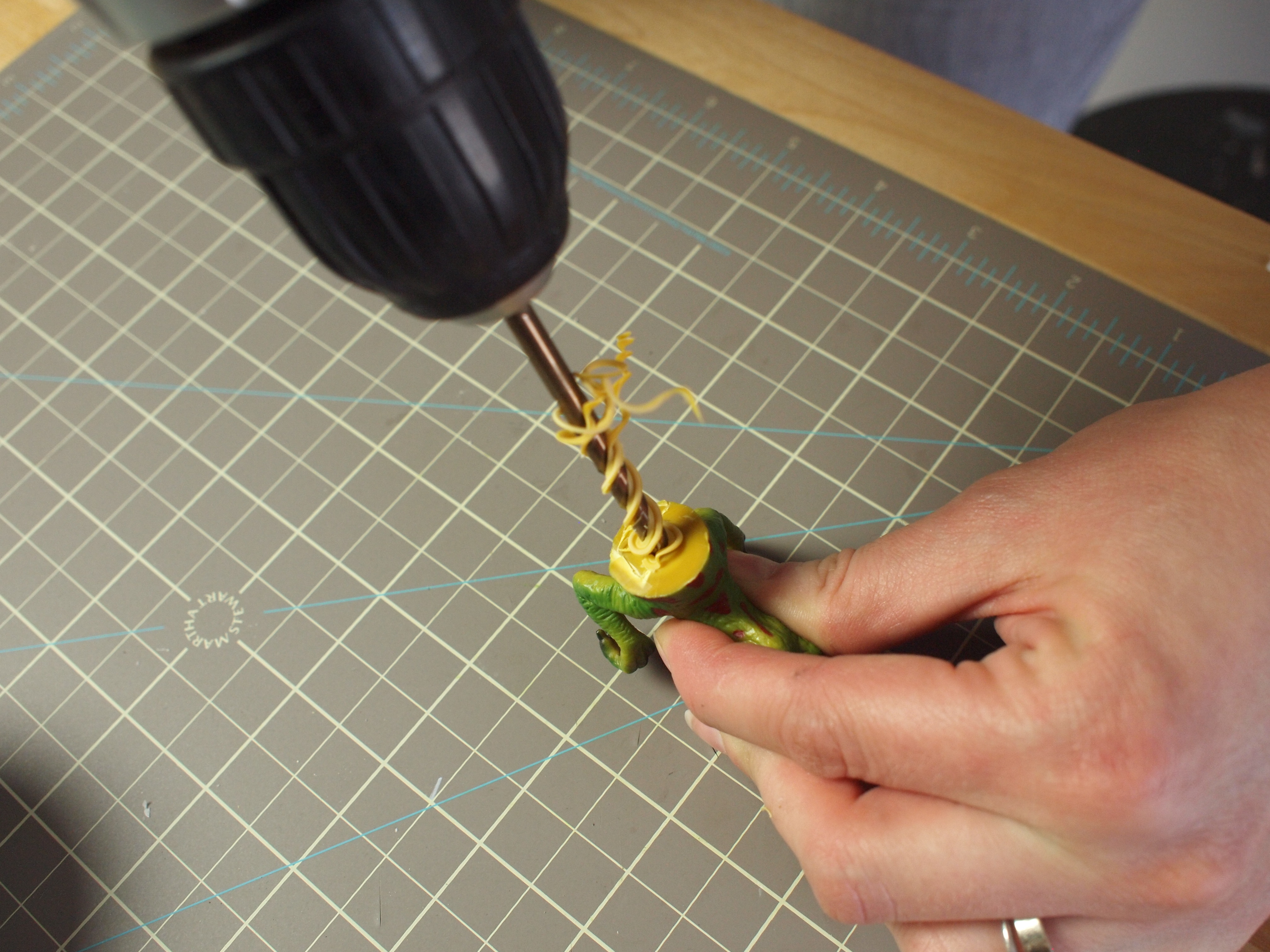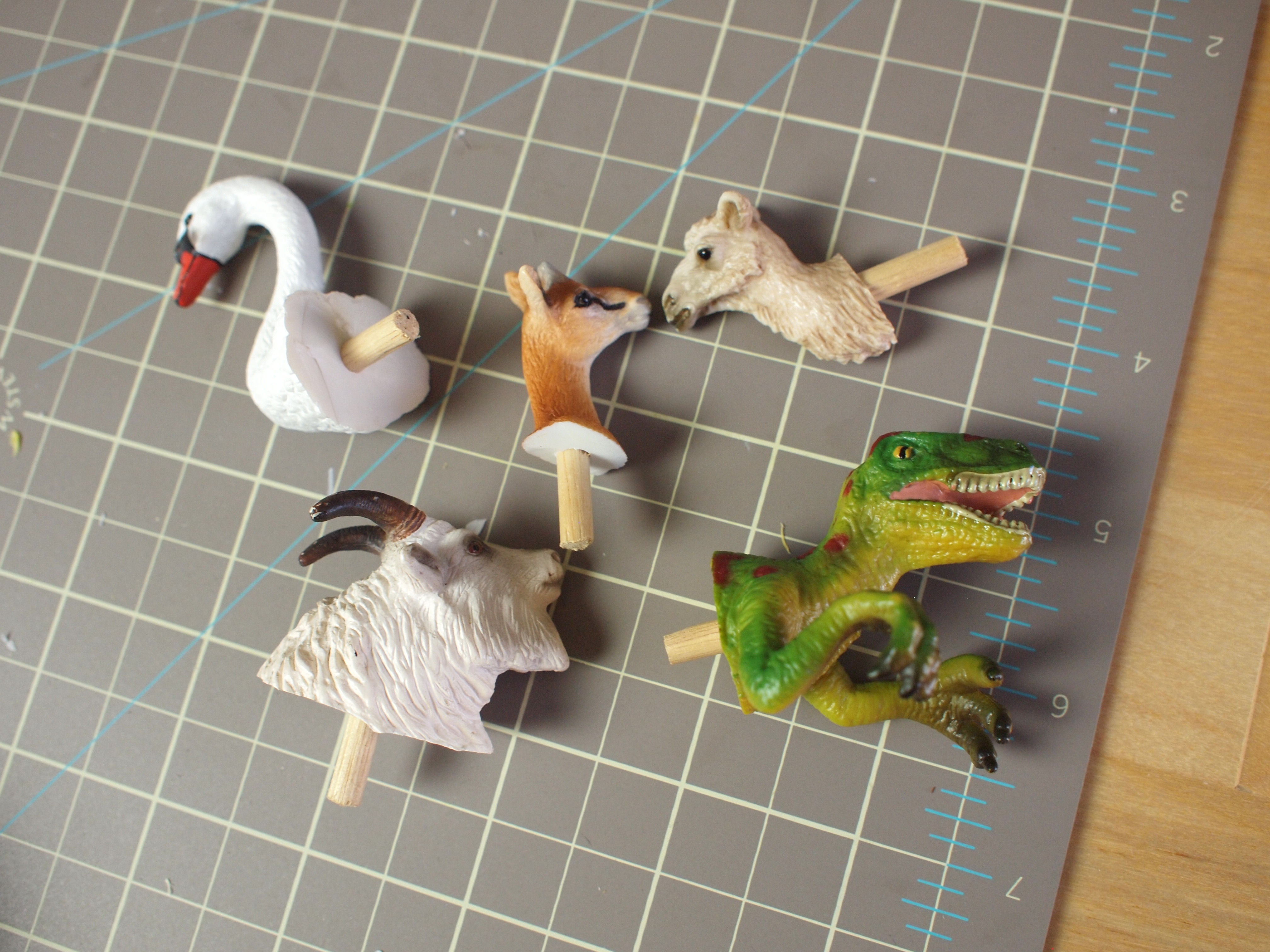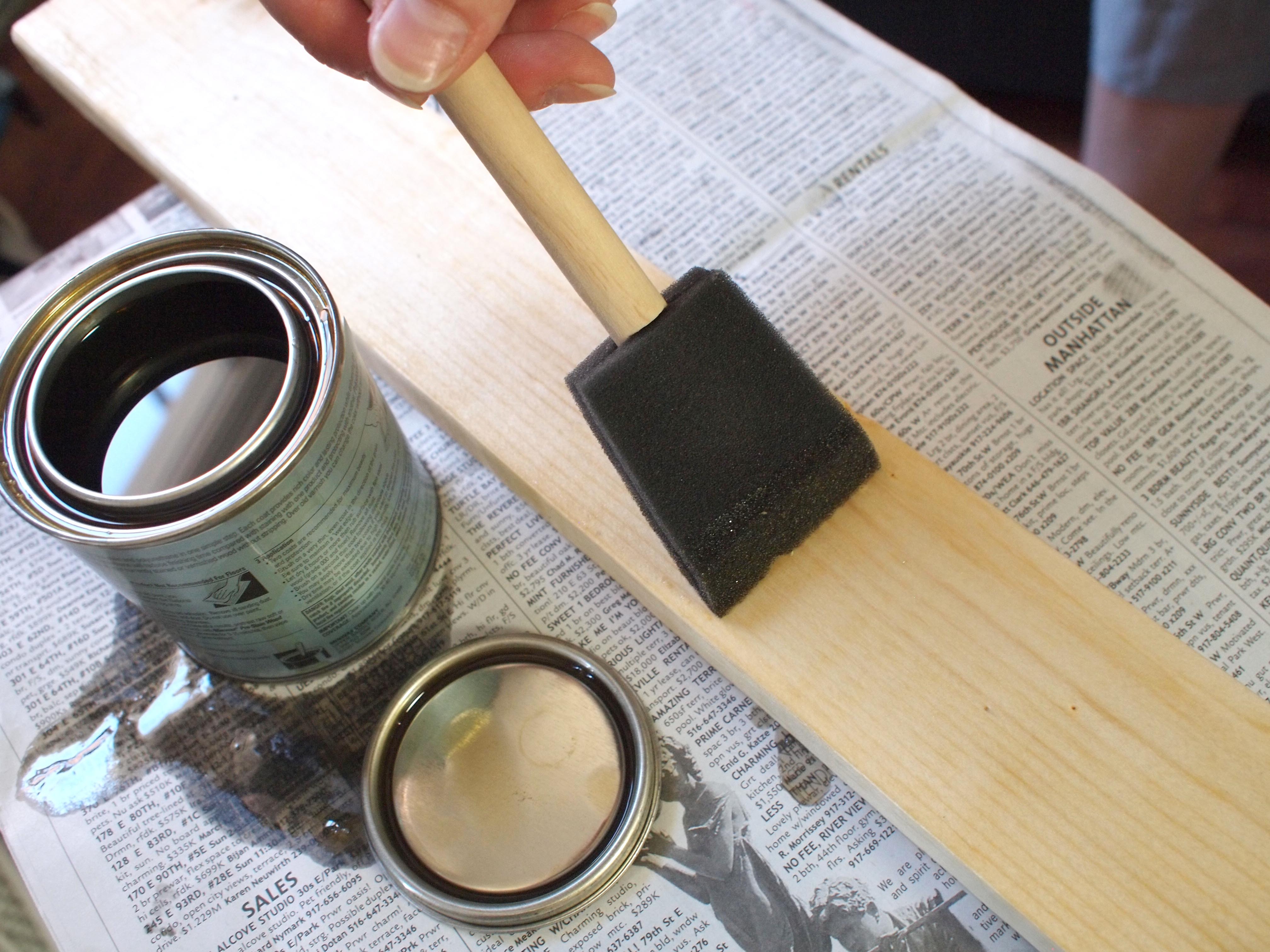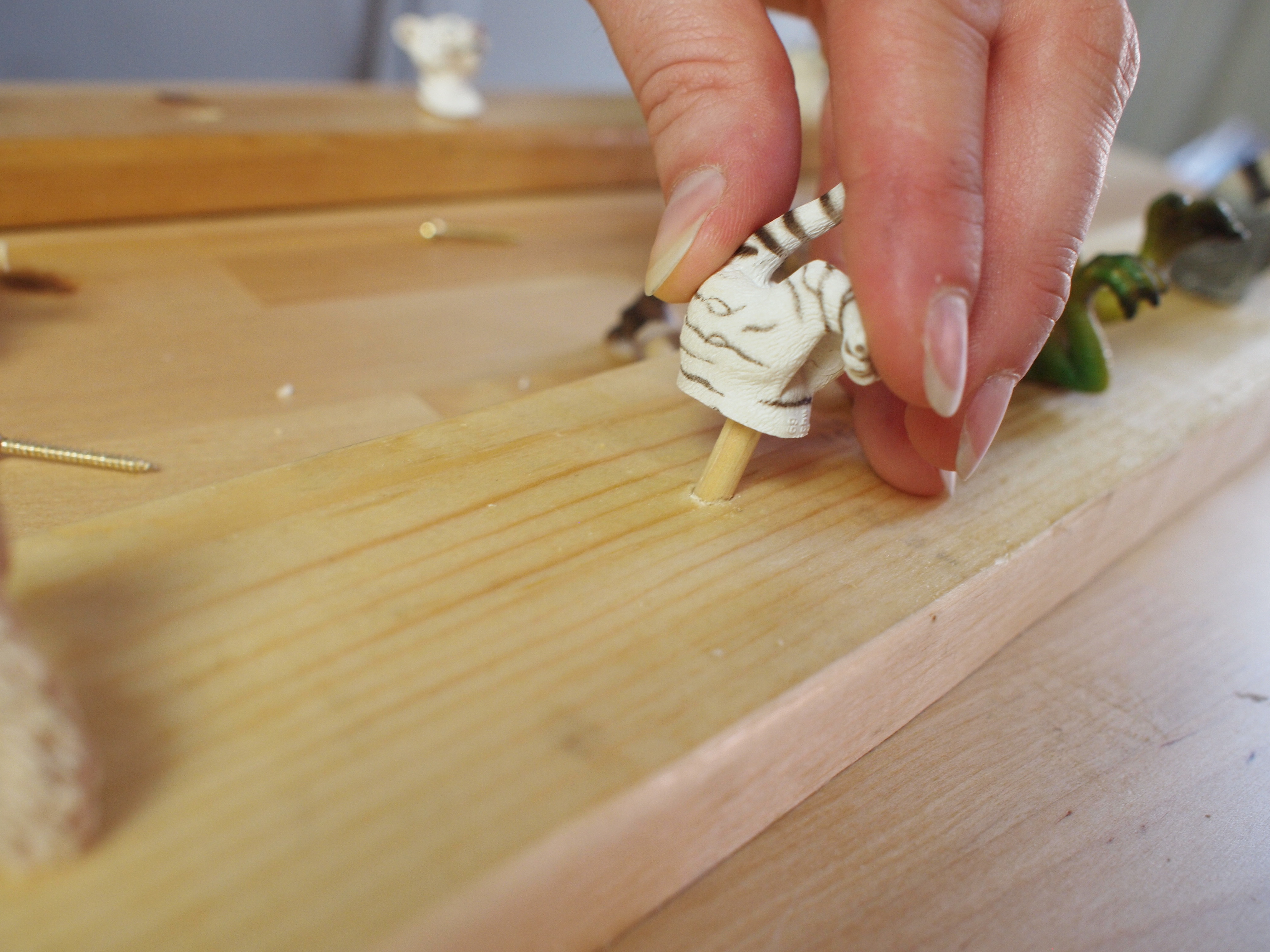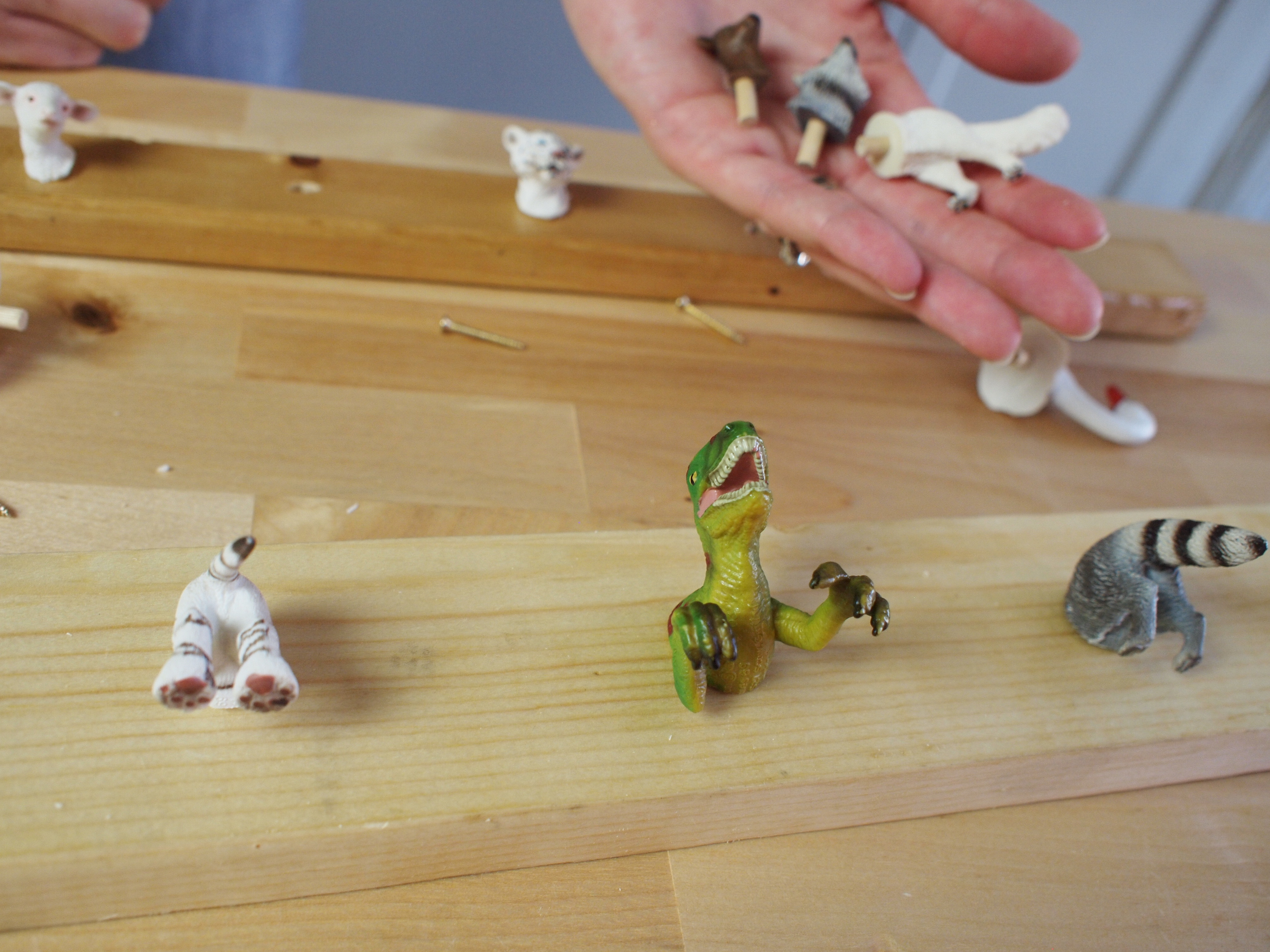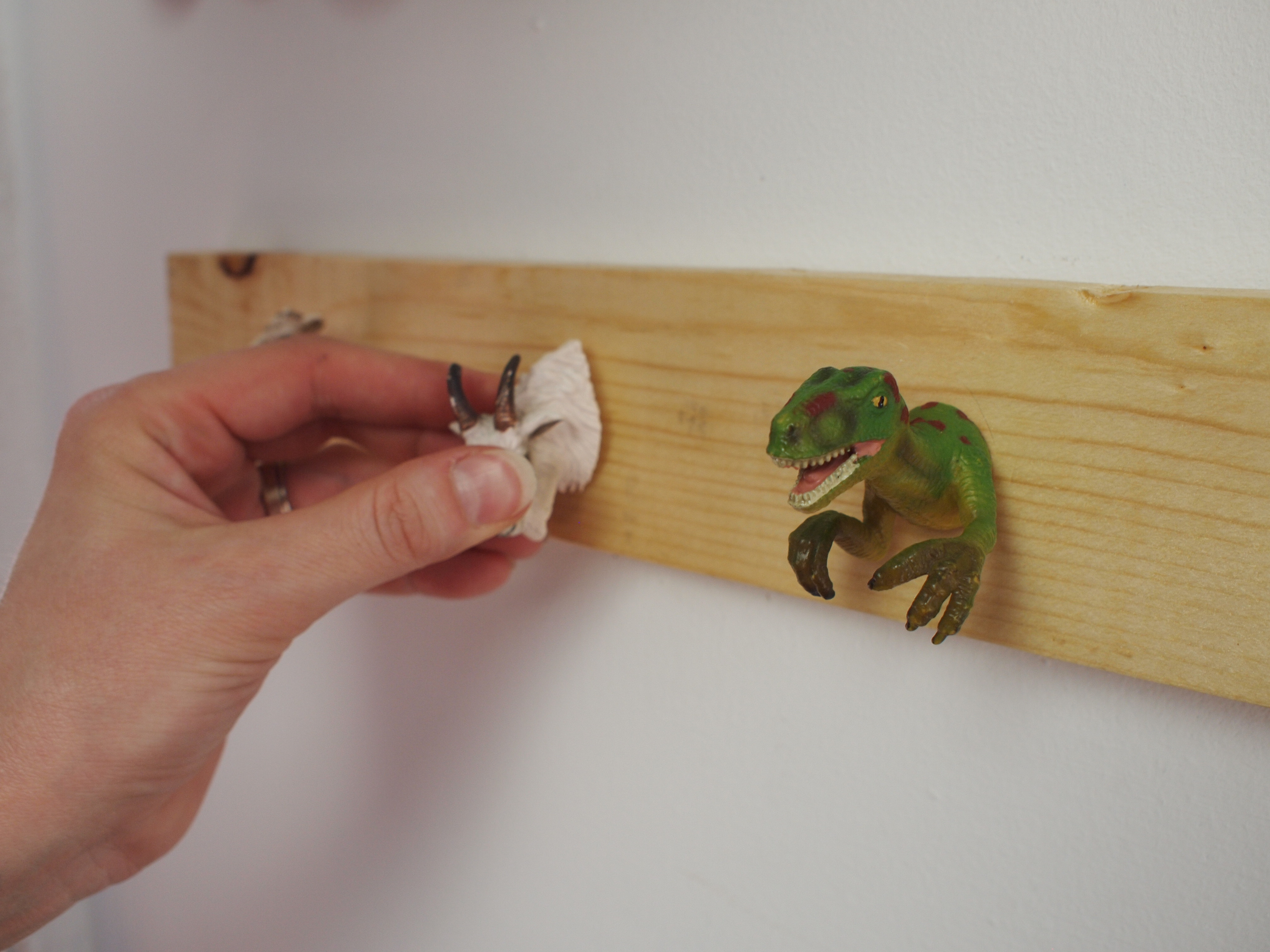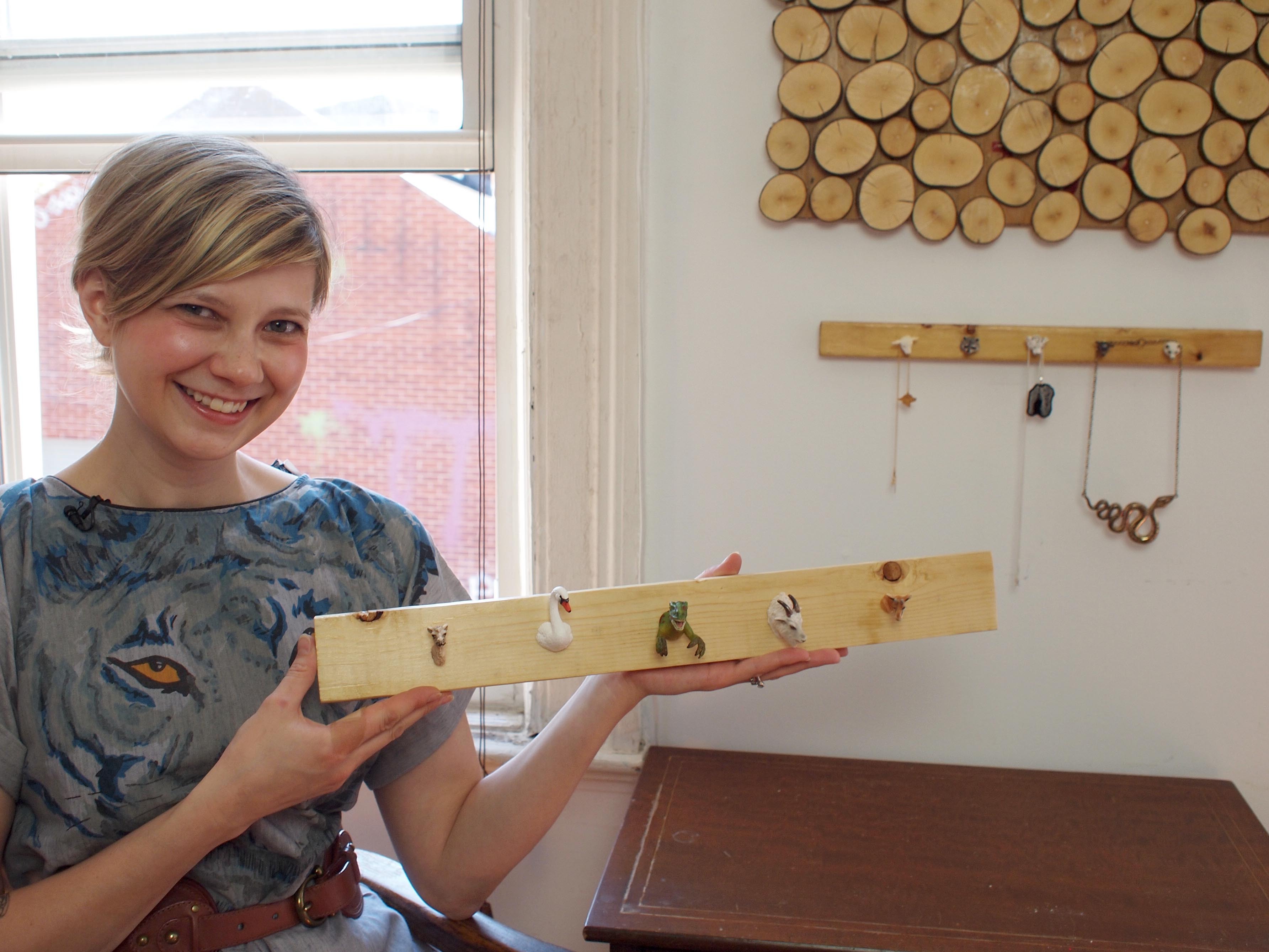Using cute little animal figurines, we are going to decapitate them and turn them into many mini-busts creating an awesome animal rack. For a more detailed tutorial, check out the accompanying video.
As a huge animal nut, I have a ton of animals all over my home. A tiger planter, a collection of deer figurines, bird sculptures flying across my wall. I can’t get enough! When I found these little animal figurines, I wanted to make something out of them. Inspired by Anthropologie and Brooklyn artist Steph Mantis, I decided that an animal rack was the perfect thing to create.


